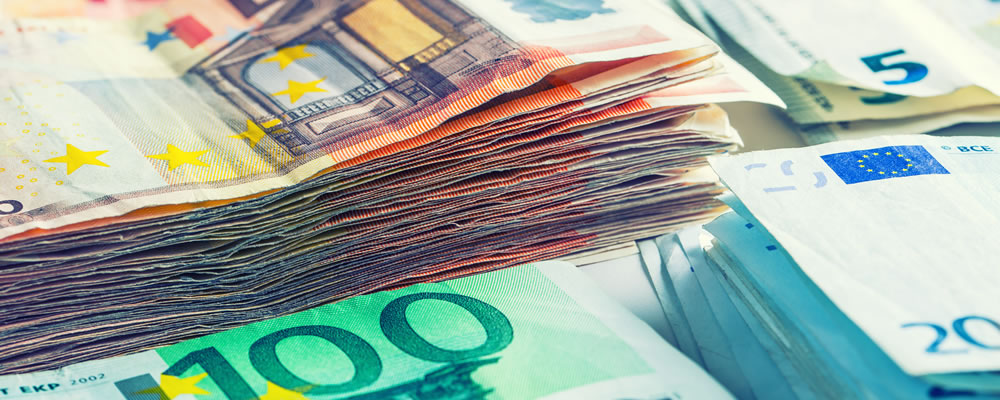The Euro to Pound (EUR/GBP) and US Dollar (EUR/USD) exchange rates gained on Tuesday in response to news from the Eurozone.
A fresh sign of strength from the currency bloc came in the form of the ZEW Economic Sentiment Survey, which indicated that confidence had rebounded strongly in August after an initial dip in response to the Brexit vote. The ZEW gauges of economic sentiment for both the Eurozone as a whole and Germany showed improvement, with the German Current Situation measure also rallying notably.
- Eurozone ZEW Economic Sentiment Survey showed strong improvement in August – Euro boosted as impact of Brexit continues to prove minimal
- Mixed UK inflation report failed to weigh on Pound demand – GBP exchange rates regained ground after CPI strengthened on the year in July
- US Dollar on weaker footing after disappointing Empire Manufacturing Index – Signs of softness undermined odds of Fed rate hike further
- EUR USD exchange rate forecast to strengthen on US CPI report – Inflation predicted to have fallen in July
The US Dollar remained on a weaker trend as markets continued to lower their expectations for the Federal Reserve to return to its monetary tightening cycle in the near future, benefitting the Euro to US Dollar (EUR/USD) exchange rate.
Eurozone Economic Sentiment Surged, Euro (EUR) Exchange Rates Boosted
The Ascension of Mary bank holiday left the Euro (EUR) with little domestic data from which to derive movement at the start of the week. Even so, the single currency was able to benefit from the relative weakness of its closest rivals as the Pound (GBP) and US Dollar (USD) remained on softer form. Investors were encouraged to pile into the Euro later in the day by the latest Bundesbank monthly report, which noted that confidence was rapidly recovering from the shock of the Brexit vote. With the currency union appearing to shake off the initial detrimental impact of the UK’s vote to leave the EU, the single currency was encouraged to trend higher.
Demand for the Euro was boosted on Tuesday morning by a better-than-expected Eurozone ZEW Economic Sentiment Survey, which offered further evidence that confidence had rebounded in the wake of the Brexit vote. The measure recovered strongly from -14.7 to 4.6 in August, encouraging investors to favour the common currency. An unexpected widening in the Eurozone trade surplus for June added to the bullish mood, overshadowing ongoing concerns over the future of the currency union.
Pound (GBP) Rallies in Response to Higher UK Inflation Rate
It was not an encouraging start to the week for Pound (GBP) exchange rates, which were rapidly weighed down by a disappointing Rightmove House Price report. Prices were found to have slumped further in August, adding to the downside pressure the housing market had experienced in July. The -1.2% contraction in house prices offered more evidence of the negative impact that Brexit-based uncertainty has been having on the domestic economy. As a result the bearish mood towards the Pound increased, particularly in the wake of dovish commentary from Bank of England (BoE) policymaker Andy Haldane.
Confidence in Sterling was shored up by the July raft of UK inflation data, despite the results proving somewhat mixed. The first post-Brexit inflation data showed that the baseline Consumer Price Index had risen 0.6% on the year, although this was contrasted by the core measure which unexpectedly fell back from 1.4% to 1.3%. This seemed to vindicate the BoE’s decision to cut interest rates in August, although the prospect of further loosening to come helped to mute the ensuing weakness of the Euro to Pound (EUR GBP) exchange rate.
EUR USD Exchange Rate Hit Monthly High after Weak US Manufacturing Data
Bets on the chances of the Federal Reserve raising interest rates imminently continued to diminish on Monday, pushing the ‘Greenback’ lower across the board and causing the EUR USD exchange rate to climb. As hopes had been for an improvement in the Empire Manufacturing Index, investors were discouraged to find that the measure had instead fallen. Clocking in at -4.21 rather than the 2 forecast this seemed to point towards further weakness within the domestic manufacturing sector, undermining the likelihood of the Fed returning to its monetary tightening cycle in the near future. This allowed the EUR USD exchange rate to strengthen sharply, before climbing to a monthly best of 1.1262 on Tuesday morning.
The US Dollar is unlikely to find particular support on this afternoon’s raft of domestic data, with July’s Consumer Price Index expected to demonstrate a slowing in inflationary pressure. Forecasts predict that inflation fell back from 1.0% to 0.9% on the year, something that would dent the hawkish outlook of the Fed further. Although the ‘Greenback’ may not remain on a bearish trend for long, as researchers at RBS noted that:
‘The upcoming FOMC minutes in the week ahead are likely to underscore that near term risks to the outlook are receding as July’s meeting statement did but may also begin to tilt the Fed’s assessment of the balance of risks towards further tightening again. This would be a clear signal policymakers think September’s FOMC meeting could potentially be a ‘live’ venue for changing interest rates.’
Current GBP, EUR, USD Exchange Rates
At the time of writing, the Euro to Pound (EUR GBP) exchange rate was trending narrowly in the region of 0.8681, while the Euro to US Dollar (EUR USD) pairing was making strong gains around 1.1258.



